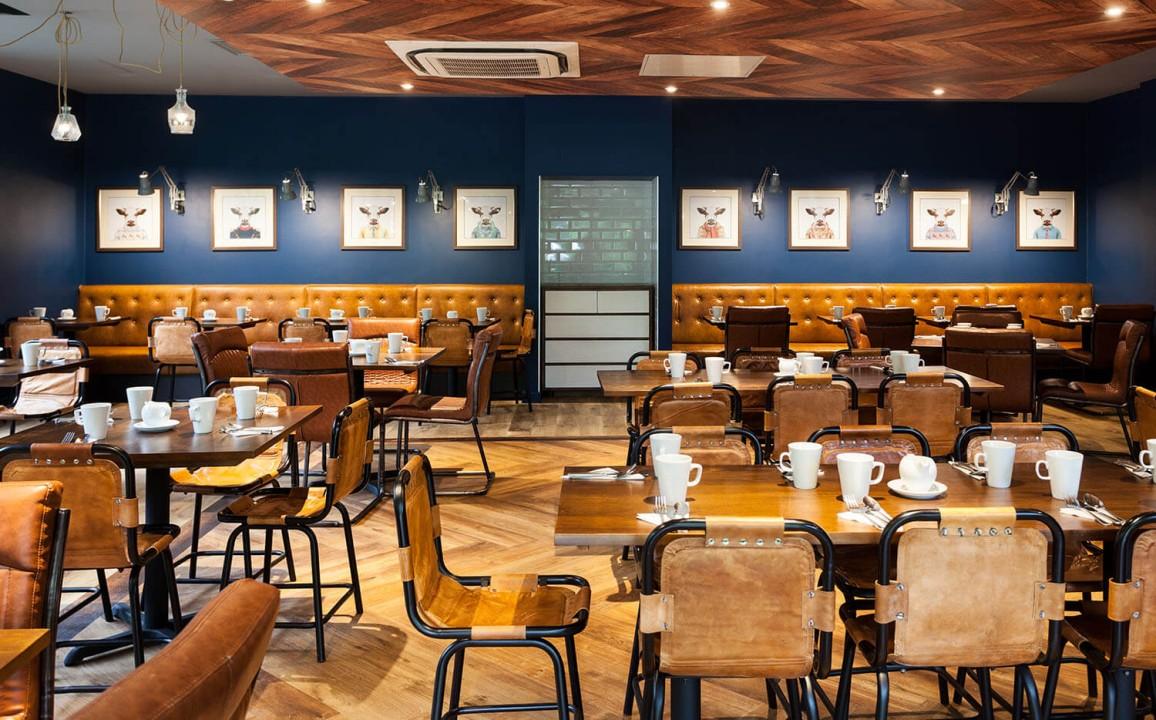Notifications

The dinner menu, setting, and level of service are the primary focuses of a successful dining restaurant. A key component deciding which dining experience is successful or not is the choice of seating. Choosing the right restaurant furniture chairs requires careful consideration of performance in addition to comfort, style, and brand awareness, which goes beyond simple space completeness. Using the right chairs as seating options would greatly improve interior design as well as client satisfaction and retention.
In order to create a pleasant and harmonious space that complements your food-based business, the following advice will outline five essential principles that will assist you in selecting the right restaurant seating arrangement.
Review your restaurant concept first before focusing on material selection or shape and color choices. Every restaurant theme requires specific chair designs which should mirror its core elements. Therefore your chair selection needs to match the restaurant's farmhouse rustic, contemporary bistro themes or family-style restaurant ambiance.
For example:
The urban minimalist café should use metal or industrial-style seating fixtures for the dining experience.
The dining setup for romantic establishments needs upholstered or tufted seating choices.
Rattan or bamboo decorative elements will perfect the tropical aesthetic in such a space.
The purpose is to make each element of your space harmonize with the same narrative. A workspace chair functions beyond its utility because it reveals critical elements of your company's brand essence. A correct coordination of ambience and furniture produces memorable dining experiences which lead to an increased likelihood of guest recommendations.
Comfort uses should be considered early in the design process. Customer comfort during seated periods determines the chair selection's ergonomic design requirement. Look for options with:
Supportive backrests
Cushioned or contoured seats
Your dining surfaces require a suitable height position of the seats
Your restaurant's design should never undergo compromise due to providing better seating comfort to patrons. Your interior gains visual enhancement while delivering comfortable sitting with chair selections that unite form and function.
Day-to-day testing of new chair options by sampling before bulk purchase should always precede making any large-scale investments. Ask questions like:
The chair provides satisfactory comfort during a 20-30 minute long seating period.
The chair demonstrates either wobbliness or an unstable feel.
All guests regardless of their age or size will have no trouble accessing the space.
The inclusion of guest comfort standards in design procedures leads to improved customer satisfaction and extended guest stays together with additional sales.
Heavy daily usage along with spills and various forms of wear damage restaurants. The choice of long-lasting materials provides you with seating items which will serve your space for an extended period. Every material comes with its own set of advantages and disadvantages as noted below:
Metal Chairs: Sleek, durable, and ideal for high-traffic areas. The materials become uncomfortable when unpadded or when left without padding.
Wood Chairs: Such chairs deliver classic warmth however they need regular care for protection against moisture and upcoming scratches.
Plastic or Resin Chairs: Lightweight, affordable, and weather-resistant, making them a great option for patios or casual eateries.
Upholstered Chairs: Enhanced comfort comes from plush upscale arrangements but these chairs have susceptibility to staining unless coated with protective treatments.
Consider your environment as well. Chairs for outdoor areas require water-proof materials whereas indoor seating permits more attention to appearance and comfort.
Warranty information alongside post-purchase support must also be checked during your purchasing process. Products which come with extended warranties demonstrate strong commitment to high quality performance.
Dining rooms become uncomfortable when chairs in catalogs appear too big or embellished since these large furniture items will both occupy too much space and make moving through the dining area difficult. Strategically arrange all dining chairs based on your floor plan requirements.
These important spatial planning guidelines should be followed:
Maintain proper seating distance between furniture items to guarantee smooth movement of staff and guests.
Keep 18 inches between the seat area and the table base for comfortable conditions.
Avoid chairs with wide arms in smaller dining spaces.
The objective remains to achieve the greatest possible seating count by maintaining both comfortability as well as visual appeal in your design. An effective dining space arrangement improves customer dining comfort while enabling better operational efficiency between staff flow and guest experience.
Restaurant furniture becomes subject to inevitable messes during regular operations. Restaurant chairs need simple cleaning solutions because wine spills together with greasy fingers will occur frequently. Intensity of maintenance challenges directly affects operational workflow and the public perception of cleaning quality at restaurants.
Staff should follow these guidelines when selecting finishes and materials for the chairs:
Commercial surfaces of metal and laminate maintain better cleaning quality because they do not possess the same challenges as fabric or textured materials.
The combination of seat cushions that can be removed together with stain-resistant fabrics works best for areas which require intensive cleaning.
Light-colored seating materials should only be used in high-traffic areas if these materials have built-in stain protection systems.
Regular cleaning should not damage the operational integrity of the chosen chair. It becomes essential to achieve constant cleanliness for maintaining an appealing perception of your space since well-kept areas create positive effects in customer judgment.
The selection of dining chairs requires more than just appearance and relaxation factors since the goal is an equilibrium between different elements within the dining area. Your choices regarding furniture selection act as fundamental elements that form the guest perceptual journey. The establishment of comforting design elements will lead guests to stay longer in addition to sharing their positive experience with others.
It is important to note that diner chairs function better when they are a part of an ensemble. The seating layout finds its foundation in restaurant tables yet it cooperates with your entire dining establishment décor. The corresponding choice of chairs with tables based on shape and size, and materials helps create a cohesive design which enhances your brand.


